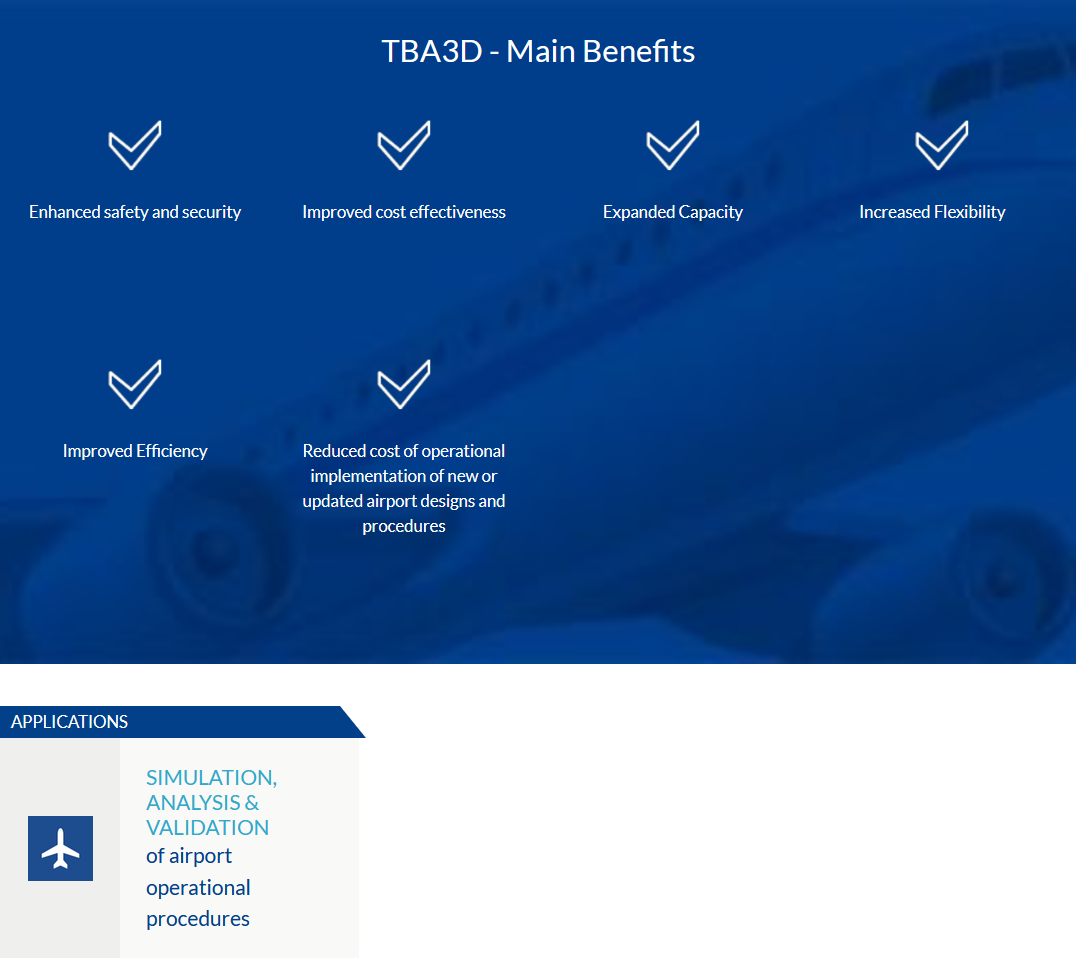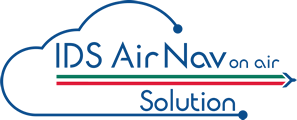FLIGHT PROCEDURE DESIGN
Aircraft, during the flight (either leaving, arriving at an airport, or on cruise phases) need to follow a stringent set of tracks and flight procedures. The design of these procedures needs to follow certain regulations such as ICAO PANS-OPS, FAA TERPS and Canadian TP 308, and it is also recommended by ICAO in Doc. 9906 Vol 5 that ground validation is performed as part of the design process.
IDS AirNav, a high tech integrated solutions services company, offers our market leading FPDAM suite for flight procedure design, used by around 60 organizations worldwide, as well as our own ICAO recognized team of procedure designers. IDS AirNav also offers a set of simulators to perform ground validation. FPSAT is a virtual simulator for flyability checks and satellite availability analysis while AACS and TBA3D are cockpit and control tower simulators respectively, which provide test bed environments for flight procedure validation, flyability checks and airport operations analysis.
AACS
Advanced aircraft cockpit simulator for ground based validation and risk assessment
AACS is a cockpit simulator designed to support aeronautical information management activities rather than pilot training. Its primary role is to perform validation of Instrument Flight Procedures (IFPs) both in regards to flight procedure flyability and also flight crew workload in nominal or contingency situations (e.g. failures, weather effects). AACS is compliant with ICAO 9906 Vol.5 requirements for ground validation and the flight management system is capable of conventional as well as area navigation (RNAV) and Performance Based Navigation (PBN). Ground based flight procedure validation via simulation plays a key role and AACS can be used to determine that:
- The procedure operates to its design accuracy with the supporting systems and navigation aids
- All obstacle and navigation data on which the design is based is verified for accuracy and completeness
- The flyability of the procedure on the basis of the pilot’s workload is assessed as suitable
- The aerodrome infrastructure is adequate for the procedure and to assess the visual impact of trajectories
- The presentation of instrument procedure charts is in accordance with the requirements
As it is not intended for pilot training AACS can be configured to simulate different aircraft, equipment and environments. It can also easily be integrated with other systems including tower and air traffic simulators such as IDS AirNav’s TBA3D as well as IDS AirNav’s FPDAM flight procedure design suite.
The flexibility of the AACS software and hardware enable it to be used for more than just procedure validation, also allowing the validation of innovative operational concepts requiring advanced airborne capabilities, such as PBN, 4D Trajectories (4DTs) and airborne separation assurance system (ASAS) maneuvers.
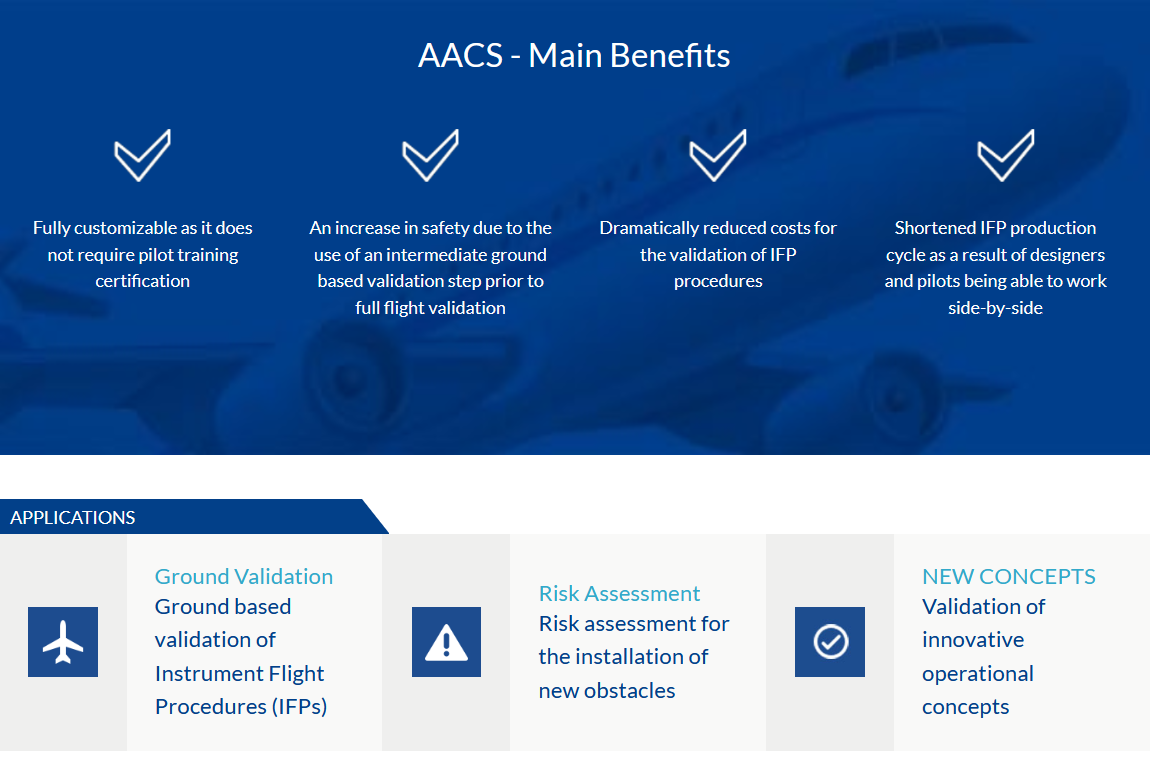
FPDAM
The professional solution for flight procedure design
FPDAM (Flight Procedure Design and Management) is IDS AirNav’s market leading solution for the aeronautical information management (AIM) task of flight procedure design. Its versatile, expandable modules provide an interactive three-dimensional environment which enables flight procedure designers to create, visualize, check and maintain instrument flight procedures compliant with international standards. FPDAM allows users to take account of factors such as airport, terrain and obstacle data, aircraft category, procedure type and rules as well as navigational aid and Global Navigation Satellite System (GNSS) availability. It includes construction rules based on and compliant with PANS-OPS (ICAO doc 8168, 9905 & Annex 14), FAA TERPS and Canadian TP 308.
FPDAM fully supports all types of procedures including SID/departures, STAR/Feeders/arrivals and approaches for conventional, RNAV/PBN, RNP AR, APV/LPV, GLS and Baro-VNAV guidance systems. It allows users to perform terrain and obstacle assessments by importing and utilizing digital terrain data relevant to procedure design in any known projection, datum and resolution/accuracy. Complex flight procedure design functions are automated within the design environment while tight control of the system configuration, design elements and design criteria related to flight safety issues are ensured through connection to a controlled aeronautical database.
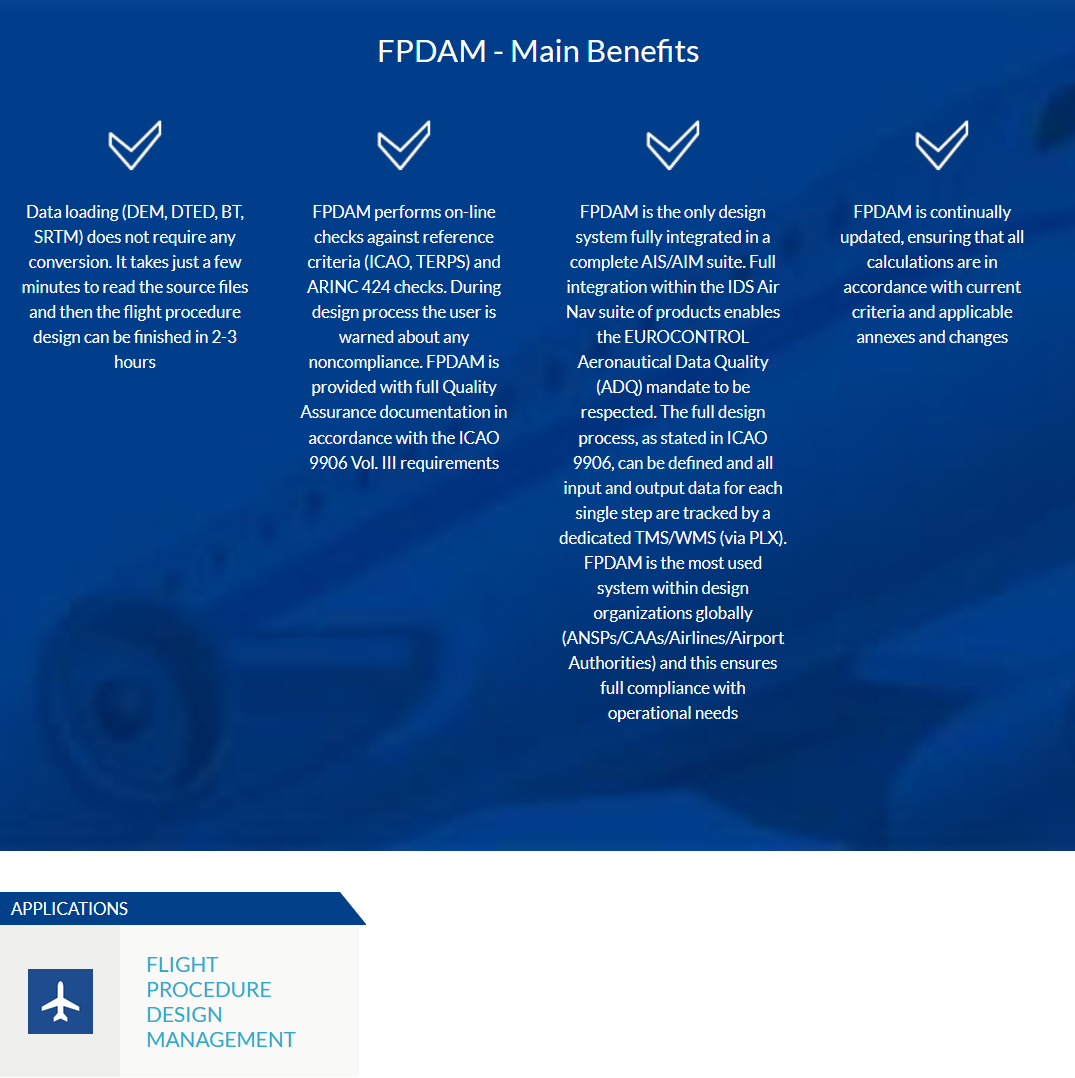
FPSAT
Enables streamlined virtual flyability checks and satellite availability analysis
FPSAT (Flight Procedure Satellite Analysis Tool) is an AIM (aeronautical information management) software tool for performing virtual flight inspections in order to check the flyability of RNAV procedures, the coverage and accuracy provided by the navigational aids infrastructure along the whole of a procedure’s trajectory and to identify any factor that may affect navigational aid performance.
FPSAT is a pre/post processor that enables procedure specialists to:
- Check how the Flight Management System (FMS) will fly the coded procedure by comparing the nominal trajectory and the simulated trajectory, taking into account ARINC path and termination (and related attributes), the type of aircraft as per EUROCONTROL BADA files, and kinematic and weather restraints
- Verify GNSS (global navigation satellite system) signal in space performance (GPS, SBAS, GBAS) along a trajectory
- Assess the signal continuity, coverage and couples’ availability of DME/DME navigation along a trajectory
- Visualize Air Traffic Services (ATS) related geographic data, perform diagnostics and check the results for their functionality
- Review procedures to optimize navigation performance, cost and environmental impact
ICAO Docs 8168, 8071 and 9906 describe the activities required for the ground validation of RNAV (area navigation) flight procedures. These include checking the coverage and accuracy provided by the navaid infrastructure along the whole of a procedure’s trajectory, and identifying any electromagnetic interference that may affect the performance of the navaid infrastructure
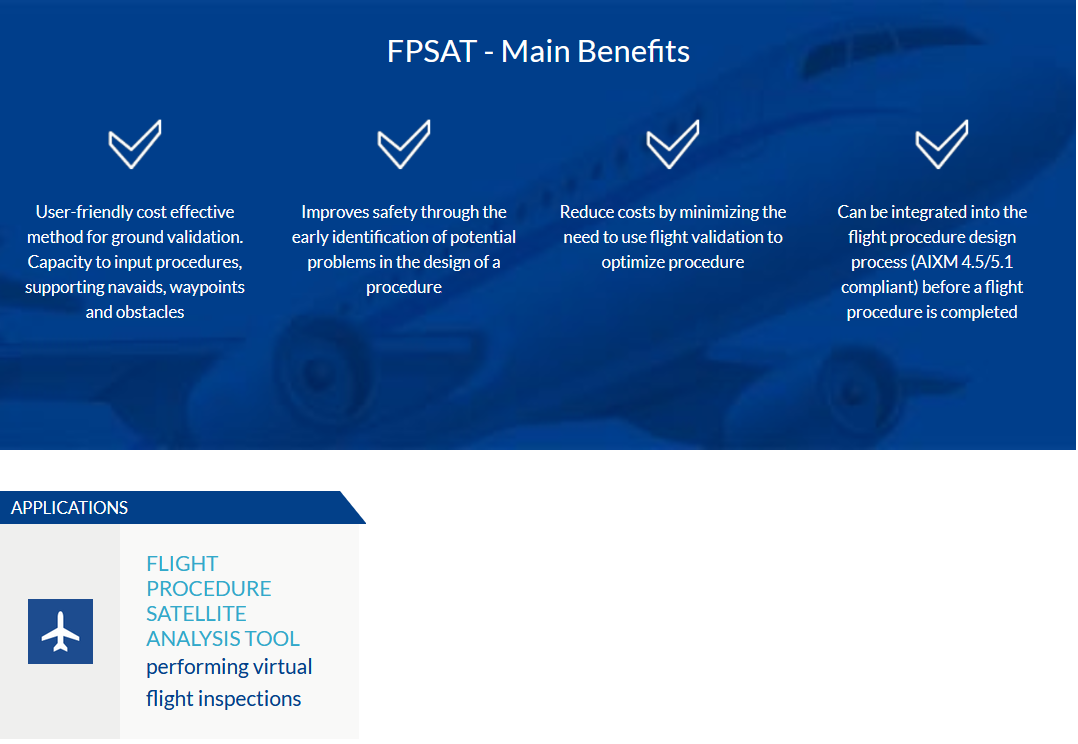
TBA3D
Fully customizable test bed for the simulation, analysis and validation of airport operational procedures
TBA-3D is a 3D test bed for A-SMGCS (Advanced Surface Movement Guidance and Control System) which provides a facility for real-time simulation and analysis of an airport environment and operations. It provides a platform to experiment with new airport layouts and operational procedures to ensure safety and efficiency. To assist with air traffic management, it can be used as a simulator to evaluate the effects of changes, emergencies and adverse conditions on airport capacity and operations. It can also be used as a tool to analyze the impact and compatibility of new buildings within the airport environment.
TBA3D is specifically designed to ensure maximum flexibility for those users that require extensive simulation functionalities and provides an integrated and modular environment which is easily adaptable to any aeronautical environment in the world. TBA3D’s air traffic controller and pseudo pilot stations can be further integrated with multiple instances of IDS AirNav Advanced Aircraft Cockpit Simulator (AACS) as well as the FPDAM flight procedure design tool via ARINC 424, to model air traffic scenarios and to configure exercises. As TBA3D is designed to be used for experimentation and not for training, it does not require any certification. This means that TBA3D can be very flexible and allows the layout and information available to each seat to be configured for different exercises and scenarios.
